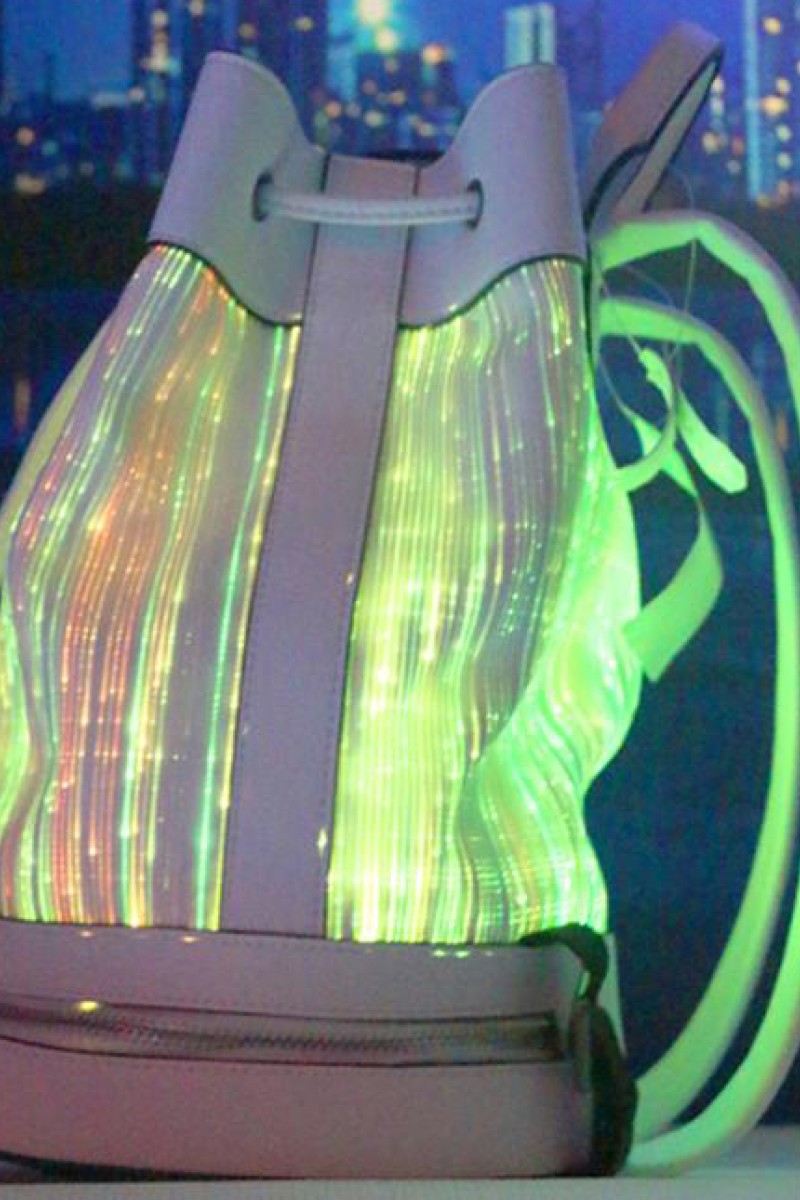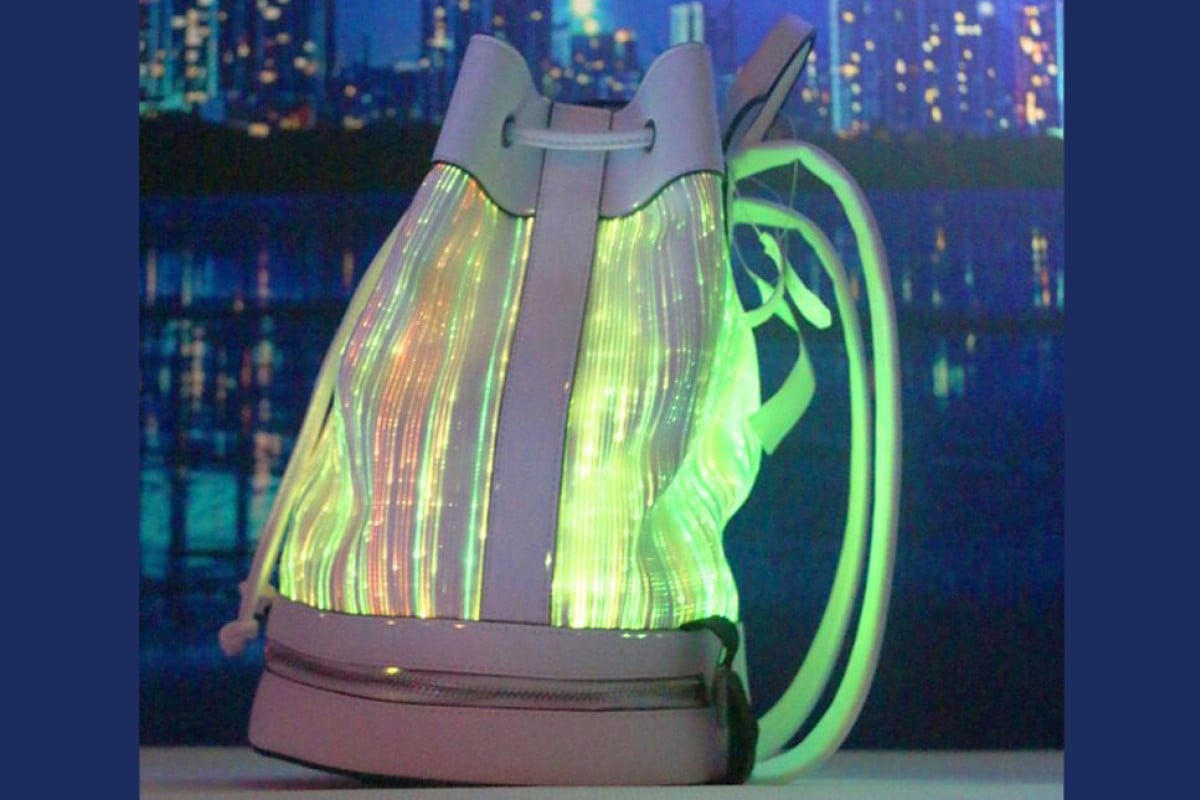
How weaving fashion and technology together can benefit businesses, shoppers, and ... NBA fans?
Forget florals, frippery, or flounces – the next big trend in fashion is technology
 Any accessories made from Luminous Fibre Optic Fabric is sure to be a statement piece.
Any accessories made from Luminous Fibre Optic Fabric is sure to be a statement piece.If you had any doubts that we are truly living in the future, the latest fashion innovations from Hong Kong fashion week will dispel the last of them.
Technology is and has long been the driving force behind the way we travel and how we communicate. Now, it’s behind what we wear, too. At this year’s Hong Kong Fashion Week Spring/ Summer, which ran July 8-11, much emphasis was placed on the collision between tech and fashion. That’s why the brands on exhibition featured many exciting new concepts for what we can wear and use at the same time in the future.
Among them was the Luminous Fibre Optic Fabric, which is a fabric made of ultra-thin optical fibres – meaning it gives off light.
7 films and TV shows for the fashion maven
The wedding dresses, bags, and sportswear that incorporated this technology were created by weaving the optical fibre, which is about as thick as fishing wire, into regular textile. The optical fibres are then connected at the edge of the fabric to LED lights, which sends light through the surface of the fabric. The result is a beautiful piece of clothing that lights up.
NFC technology
Another innovation that was seen making the rounds at the show was fashion brand CoolPop’s buttons, which contained near field communication (NFC) chips.
NFC is the wireless technology that makes e-payment services like Apple Pay or Samsung Pay possible. It allows data to be transferred between two devices when they are held a few centimetres apart from each other. In the fashion world, items of clothing that carry an NFC chip allow the wearer to see the latest discounts or releases from that brand. They can do this by scanning the chip with an app on their phone.
Nike recently unveiled National Basketball Association jerseys embedded with NFC chips, which allow wearers to unlock exclusive content like game highlights and statistics or trivia about top players when scanned.
How technology contributes to sustainable fashion and what you can do to help
What is fashion technology?
Technology in fashion doesn’t simply apply to the clothes themselves, either. According to Carol Yang Chen-xiao, a PhD student who specialises in textiles and clothing at the Hong Kong Polytechnic University, fashion technology is a much wider concept.
“Don’t just focus on retail. Artificial intelligence and smart-factories are updating the technology used to make textiles,” she says. “These newly invented materials will then impact designers, who will create new trends out of them – like the novel fashion wave started by the invention of luminous fibre.
“When we try to sell the products, tech facilitates this, too; NFC technology, for instance, allows brand to interact with customers.”
Artificial intelligence plays a huge role in fashion tech, too. According to Andrew Zhu Shuai-yin, a leading expert in artificial intelligence in fashion at Polytechnic University, fashion tech evolves as a key problem in fashion industry – how to connect people with clothing – is continuously addressed. Zhu believes that 3D modelling may hold the answer to this question.
“In the future, 3D modelling will be used to take a person’s body measurements, which can be stored in a database.” The fashion industry could then, he says, use these measurements to find out what sizes are most wanted in various regions in the world.
Future of fashion tech
Despite its potential, hi-tech fashion has not quite yet filtered into the mainstream. Zhu believes this is because the habits of consumers are not that easy to change. “But this is definitely a growing market,” he adds. “You can now pay less for a better product and get it in half the time [that is used to take] thanks to innovation.”
Hong Kong, which used to be one of Asia’s biggest textile exporters, can be considered a bridge between Western buyers and factories in the Asia region but, as Zhu points out, a gap still remains between fashion tech and the consumers themselves. “There should be more collaboration between brands and consumers, rather than simply between brands and local manufacturers.” And, while the government has encouraged research and investment in fashion technology, Zhu believes that the key lies with people and local talent.
Still, whether it’s large companies creating NFC-chipped shirts or small-time companies making light-up dresses, fashion tech is one fashion trend that isn’t going to disappear any time soon.
